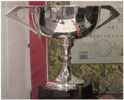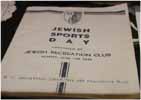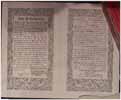|
October 2001 - August 2002 |
 |
|
|
| The refugees in Hongkew formed a myriad
of associations to manage their resources and organise their lives. With
the help of the already established communities new institutions were created:
synagogues, Jewish schools, sports clubs and Zionist and socialist groups.
As poverty intensified, the American Jewish Joint Distribution Committee (The Joint or JDC) played a key role in making survival possible. Funds were transferred from the United States through the Red Cross. By 1945, 11,000 of the 18,000 Jews in the ghetto depended on Joint assistance. Aided by organizations such as the Polish Mutual Aid Society, which relied on local donations, the Joint set up communal soup kitchens in addition to other welfare services. Sport was a vital escape with many soccer teams a feature of ghetto life. The refugees quickly recreated a rich cultural life. Music ensembles, writers’ groups, art clubs, theatre and cabaret thrived. Many local musicians worked as music teachers as well as performing in cafés. Adult education groups met regularly, offering such diverse topics as current affairs, mathematics and chess. |
| Object:
Lender: Notes: |
Cabaret
garment Marischel, S Fabric Pants, bodice, scarf, jacket, hat (2 parts) |
|
| Object: Lender: Notes: |
Card
of Jewish recreation club Pisk, G Paper |
No image
available
|
| Object: Lender: Notes: |
Cup Marischel, K Silver Soccer/sports/trophy |
|
| Object: Lender: Notes: |
Jewish Sports Day magazine Jellineck, G Paper Willy Jellineck - Fashion trader |
|
| Object: Lender: Notes: |
Marriage certificate (Hebrew/English)
Beran, D Paper Dita Beran's certificate |
|
| Object: Lender: Notes: |
News clippings for entertainment in Ghetto
Gunsberger, F & R Paper |
No image
available
|
| Object: Lender: Date: Notes: |
Wedding gloves Gunsberger, F & R 1942 Fabric Crocheted; belonged to Sabine; wedding in Shanghai 17 May 1942 |
|
| Object: Lender: Notes: |
Wedding invitation card Beran, D Paper |
No image
available
|
|
|
|
|
|
|
|
|
|




